From bathroom walls to kitchen backsplashes, incorporating tiles into your design is a versatile way of bringing personality to any space. If you can dream it, chances are you can create it with tile.
To help you work your design magic, we’ve put together some basic criteria you should know before you start working with tiles. Factors like space, cost, finish, and maintenance are critical to choosing the right tile for your client’s home. But don’t worry—this guide will break the basics down for you. So go ahead, plan that dreamy Tuscan-inspired mosaic…
Ceramic:
Many clients rave over it, but what is ceramic exactly? Well, generally it’s a combination of sand, water, clay, and other natural materials, which set once exposed to high heat. The ceramic tiles we see in home design are often coated with a glaze for a high-gloss finish.
Where can you put ceramic?
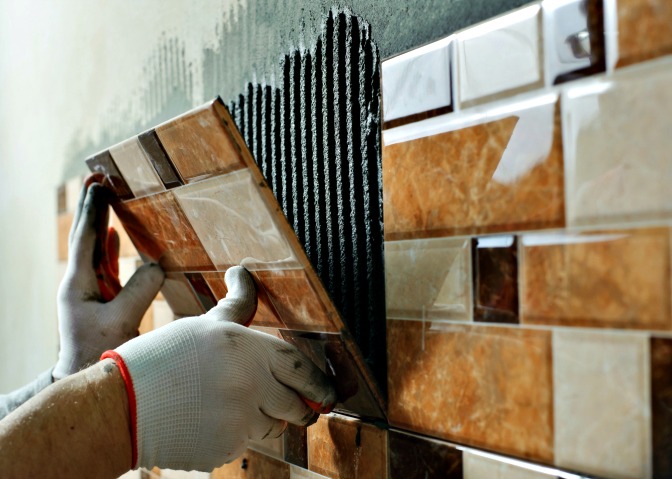
Ceramic tiles are a great flooring option for a number of reasons. Extremely durable, ceramic is suitable for high traffic areas. Specialty anti-slip glazes for ceramic flooring tiles are also available.
In terms of everyday maintenance, ceramic is moisture resistant and easily cleaned—also making it an ideal tile for bathroom and kitchen areas, including walls, backsplashes, countertops, and floors. Color and size vary by manufacturer; however, ceramic tiles are relatively cost-effective.
Porcelain
A subtype of ceramic, porcelain is a denser clay-based tile. More expensive than ceramic, porcelain is also more resistant to moisture—it’s usually the perfect tile choice for bathroom surfaces inside or near showers and bathtubs. Glazes and colors vary. Ceramic tiles are trickier to install than ceramic because they require a specific compound that will properly set each tile.
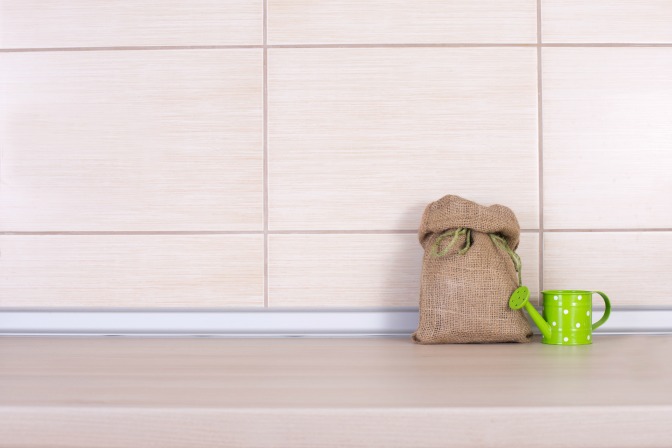
Although the differences between porcelain and ceramic can be perplexing, neither is suitable for extreme cold—so if your client wants to feature them in the exterior of their home, look for tiles designed for outdoor use.
Natural stone tile:
Stylish and sustainable, natural stone is a fantastic option for the client who wants a bold aesthetic. Although it lacks the versatility of more conventional clay-based tile, natural stone tile more than makes up for this drawback with its striking appearance. And surprisingly, natural stone tile is very cost-effective if you consider its longevity.
Slate
A metamorphic rock, slate is quarried directly from the earth. Because of this, its color and density vary. Typically seen as a flooring option, slate is quite water and stain resistant, but brittle. For these reasons, installation is better left to the professionals. It’s also more expensive than other tiling options. However, once it is set, slate is extremely low maintenance. That means it will endure (and look good!) for years of wear to come.
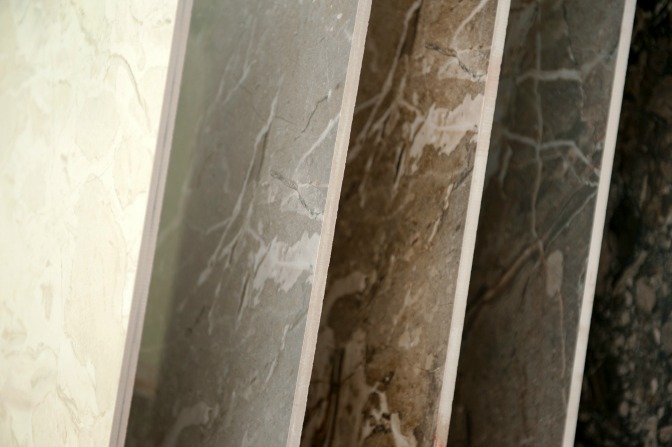
Marble
A real statement-maker, marble is perfect for the client who wants a distinctive look. That being said, creating a uniform pattern can be a challenge since the tone and veining of each marble tile is different. Installation will be a trial-and-error process until you find a configuration that works with your design. Arrange them first and then have them installed! In addition, marble is high maintenance. Tiles need to be sealed and periodically cleaned.
Granite
Tiles are an excellent alternative to working with granite slabs. While tiles still give that ‘wow’ factor, they are lighter and will come pre-cut according the dimensions you request. An igneous rock, granite is another porous natural stone that needs to be sealed during the initial installation, and then consistently re-sealed afterwards. Even with an appropriate finish, granite tile is still high-maintenance: harsh cleaners and even acidic drinks will damage it.
Tile pattern 101
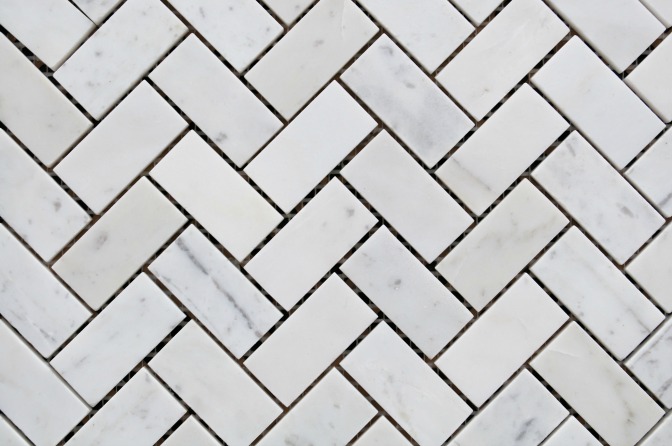
Tile type and material aside, your client also needs to consider what kind of overall look they want.
Tile is available in every pattern imaginable, which is something to consider when your clients commit to one—even if some of the patterns sound like a poker hand at first!
- The Straight Lay: As its title suggests, this is a simple pattern to achieve. Just set the tiles down without fussing over a complex design.
- The Brick Lay: This pattern is often created with what you may have heard called “subway tile,” a simple ceramic tile. Recreate the look of a brick wall by placing the tiles horizontally, or vertically.
- Herringbone: This is a sophisticated pattern, but a relatively straightforward one if you can lay out your tiles at right angles and zigzag them. Be forewarned: the distinct cuts on this one might require extra tile.
- Staggered Mosaic: This one is exactly what it sounds like. Space out your tiles in a shape or design that you like. Then recreate that design or ‘mosaic’ by repeating that pattern over an expanded surface. Because this look is a little more intricate, aim for an accent wall to begin.
Grouting guidelines
Finish and binding materials are other things to incorporate into your design plans. Regardless of whether your client selects a glaze or not, each different tile type needs to be installed with a specific grout. From epoxy to sanded, grout should be sealed to extend its lifespan.
In terms of color, you can choose to go with a grout color that mimics the color of the tile for an invisible finish, or select an entirely different shade for contrast.
New tile design trends
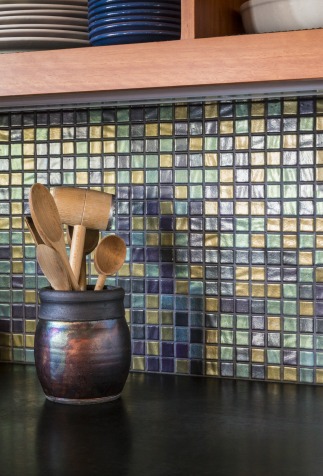
Mix and match tile designs for an unexpected twist to a fireplace. For the sartorially adventurous client, a mix and match pattern may be the very bold look they want.
Create an optical illusion. Quite marvelously, porcelain can imitate the look of almost any other natural tile: granite, marble, or even a wood finish. Using a porcelain tile that mimics the look of hardwood is a fabulous alternative to conventional bathroom tiles.
Glass is another stylish tiling option. A fantastic solution to other individual tiles, glass is easily customized into a range of shapes and sizes. It can be used for floors, walls, fireplaces, and backsplashes in accent strips or larger patterns. The reflective properties of glass make it an eye-catching way to bring visual interest into a smaller space.


